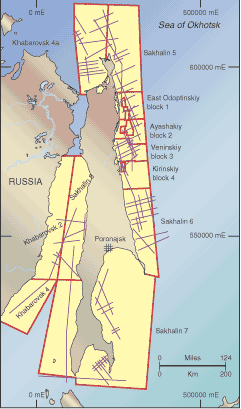Asia/Pacific
Unocal Thailand produces gas, condensate from Pailin field
Unocal Thailand Ltd. has begun gas production from the Phase II development on Pailin field in the Gulf of Thailand at 165 MMcf/d of gas, which brings the contracted natural gas sales from the field to 330 MMcf/d.
Exploration drilling in the Pailin field began in 1996, with the seventh successful well drilled in February 1997. The wells were part of a drilling program to confirm gas reserves required to move ahead with Phase II of the Pailin development program. At that time, Unocal planned for development to begin in 2001.
All of the contracted gas is being purchased by Thailand's PTT Exploration and Production Public Co. (Pttep), the country's partially privatized state petroleum company, under a 30-year gas sales agreement that was signed in 1996. Production from the field's Phase I development began in August 1999.
The Phase II facilities achieved production rates as high as 230 MMcf/d during commissioning in June, which demonstrated the capacity of the Pailin field to provide more than 380 MMcf/d. The Phase II facilities are also producing 6,800 b/d of condensate. This brings total condensate production from Pailin to more than 15,300 b/d.
With the new production from Pailin Phase II, gross natural gas production from the fields operated by Unocal Thailand now totals 1.07 bcf/d for the Thai market. Unocal has also ramped up gross oil production from the Yala-Plamuk complex, where the company has 71.25% working interest, to more than 16,800 b/d.
Unocal has installed 11 wellhead platforms and two processing platforms to serve the field. Investment for the development of Pailin field exceeds $820 million.
"Production of natural gas from North Pailin is another major milestone toward greater energy security for Thailand," said Tara Tiradnakorn, Unocal Thailand's vice president of operations. "In addition to increased royalty and tax payments to Thailand, the kingdom now has access to a larger volume of inexpensive, efficient natural gas for power generation and other uses."
Unocal Thailand operates Pailin field with a 35% working interest. Partners include Pttep with 45% interest, Amerada Hess Exploration (Thailand) Co. Ltd. with 15%, and Moeco Thai Oil Development Co. Ltd., an affiliate of Mitsui Oil Exploration Co. Ltd., with the remaining 5%.
Rosneft lands Sakhalin 5
In early July, BP announced that Rosneft had been awarded a five-year exploration license for part of the offshore Sakhalin 5 block offshore Russia. The exploration license covers the Kaigansky-Vasuykansky blocks of the East Schmidtovsky offshore area in the southern part of the Sakhalin 5 tract, covering 10,000 sq km. The US Department of Energy's Energy Information Administration places reserves in this region at 4.4 Bbbl and 21 tcf of gas.
Earlier this year, Russia's Ministry of Natural Resources evaluated subdividing Sakhalin 5 into smaller blocks so that exploration and development activity on the blocks could be carried out at the same time. Because the existing seismic and geological data was not adequate to identify significant reserves, there was some skepticism that a single bidder would take a chance on the entire block.
An alliance comprising BP, OJSC NK Rosneft, and Rosneft-Sakhalinmorneftegas formed in 1998 to develop Sakhalin 5 hydrocarbons. BP has a 49% interest in the alliance, with OJSC NK Rosneft holding 25.5% and Rosneft-Sakhalinmorneftegas with the remaining 25.5%.
The alliance will jointly carry out development operations, including geological studies, that will supply much needed data on the license area. A joint venture company to be set up by the alliance will hold the license. The work program for Sakhalin 5 includes seismic acquisition and exploration drilling. The alliance will procure seismic data from a survey gathered by Dalmorneftegas and PGS this summer. Data analysis will follow, with drilling possibly beginning as early as 2004.
Production of oil and gas onshore Sakhalin Island began in the 1920s. There have been five giant discoveries of more than 500 MMbbl of oil and 1 tcm of gas in the past 30 years. The offshore area has proven prolific as well, and there will certainly be more significant finds when new regions are thoroughly explored.


